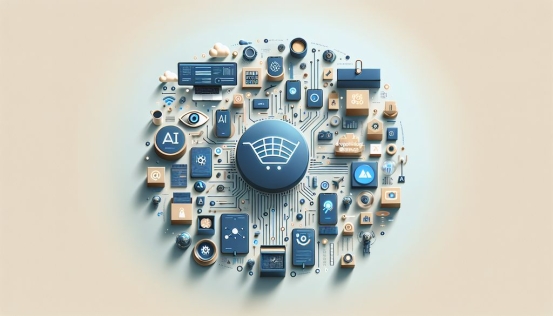The UK’s e-commerce landscape continues to expand rapidly, driven by the evolution of remote fulfillment and digital innovation. To remain competitive in this growing industry, dropshippers must do more than recognize consumer preferences—they need to master regulatory frameworks and utilize advanced automation and AI solutions that simplify workflows, enhance accuracy, and enable data-driven decision-making.

Unleashing the Power of AI: Smarter Product Sourcing Strategies
At the foundation of every thriving dropshipping business lies intelligent product sourcing. Artificial intelligence provides the tools to pinpoint market opportunities, evaluate supplier reliability, and forecast product success—empowering sellers to make informed, profitable choices.
1. AI-Powered Trend Analysis and Market Forecasting
AI can process and interpret massive datasets, helping dropshippers detect emerging trends long before they reach the mainstream. By analyzing purchasing patterns, keyword searches, social media activity, and competitor behavior, AI reveals which products are likely to dominate upcoming sales cycles. Capitalizing on these early insights allows entrepreneurs to establish a presence before markets become saturated, improving profit potential and brand authority.
Additionally, AI identifies untapped market niches by examining consumer demographics and behavioral insights. This makes it possible to target specific audience segments effectively. For example, if data reveals that eco-friendly products are increasingly favored by younger consumers, aligning your catalog with sustainability trends can improve conversion rates and reinforce a positive brand image.
2. Evaluating Supplier Credibility Through AI
Reliable suppliers are essential to ensure customer satisfaction and consistent service quality. AI assists by analyzing supplier performance data, customer reviews, and shipping metrics to identify dependable partners while flagging potential risks. This eliminates guesswork, reduces delivery issues, and safeguards your store’s reputation.
AI also supports negotiation strategies by aggregating pricing information across markets to determine fair costs. It highlights suppliers offering better rates for long-term agreements or bulk purchases, helping maximize margins and build stable business relationships.
3. Testing Product Viability Using AI Simulations
Before investing in inventory, it’s critical to validate product potential. AI tools conduct simulations based on factors such as demand volume, competition intensity, and pricing trends to estimate market performance. This “virtual testing” approach enables risk-free experimentation, helping entrepreneurs focus resources on the most promising products and minimize unnecessary expenses.
Automating Operations: The Role of AI in Dropshipping Efficiency
AI-driven automation transforms how dropshipping businesses operate, eliminating manual inefficiencies and improving scalability. When integrated across core functions, automation enhances speed, accuracy, and long-term sustainability.
1. Smarter Inventory and Order Management
Efficient inventory management is one of the greatest operational challenges for dropshippers. AI simplifies this process through:
Real-Time Stock Synchronization: Automatically aligning supplier and store inventories to prevent overselling.
Automated Order Handling: Managing order validation, payment processing, and supplier coordination seamlessly.
Predictive Demand Forecasting: Using historical data to anticipate upcoming demand, helping balance supply with market needs.
2. Enhancing Customer Experience with AI Chatbots
Exceptional customer service strengthens retention and brand trust. AI chatbots contribute by providing:
24/7 Customer Availability: Assisting global shoppers around the clock.
Instant, Accurate Responses: Resolving order-related or product queries quickly.
Personalized Support: Customizing recommendations and interactions based on user behavior.
Reduced Workload: Allowing human staff to focus on more complex customer needs.
3. Simplified Supplier Coordination and Adaptive Pricing
AI tools can automate supplier communications—from order placements to shipping updates—reducing administrative workload. Moreover, dynamic pricing algorithms continuously monitor competitors and market trends, automatically adjusting product prices to remain competitive while maximizing profits. Unified dashboards give business owners clear, real-time insight into performance and growth metrics.
Building a Scalable, AI-Driven Dropshipping Model
Dropshipping enables entrepreneurs to operate lean, profitable online businesses without the constraints of physical inventory. In an era defined by AI-driven automation, adopting smart technologies is the key to faster scaling and consistent profitability.
1. Thriving in the Modern E-Commerce Landscape
Social commerce on platforms like TikTok and Instagram is reshaping how consumers discover products, emphasizing authentic engagement and storytelling. At the same time, the growing dominance of mobile shopping makes it essential to optimize websites for seamless, device-friendly navigation and quick checkouts.
2. AI-Enhanced Customer Interaction
AI-powered chatbots do more than provide quick support—they analyze customer behavior and suggest tailored product options, improving satisfaction and encouraging repeat purchases. This personalized interaction fosters deeper brand loyalty and enhances the overall shopping experience.
3. Data-Centered Optimization and Decision-Making
Success in dropshipping depends heavily on data. AI analytics tools convert raw information into actionable insights, allowing you to identify best-selling products, monitor competitors, and fine-tune pricing strategies. This data-backed decision-making ensures efficiency, adaptability, and sustainable profitability in a fast-changing market.
4. AI in Visual Marketing
High-quality visuals play a critical role in e-commerce performance. AI-based design tools can create realistic 3D renderings and optimize images for clarity and search visibility before actual inventory exists. This enhances product presentation, attracts more traffic, and increases the likelihood of conversions.
Final Thoughts
The integration of AI and automation has redefined what’s possible in the dropshipping industry. By combining intelligent sourcing, predictive analytics, and automated management, entrepreneurs can build scalable, efficient, and future-ready businesses. In a landscape where technology drives competitiveness, those who leverage AI effectively will lead the next generation of successful online retailers.
